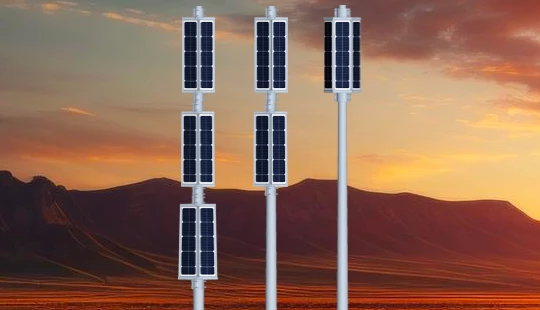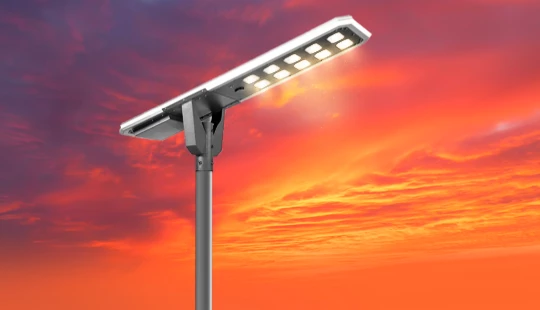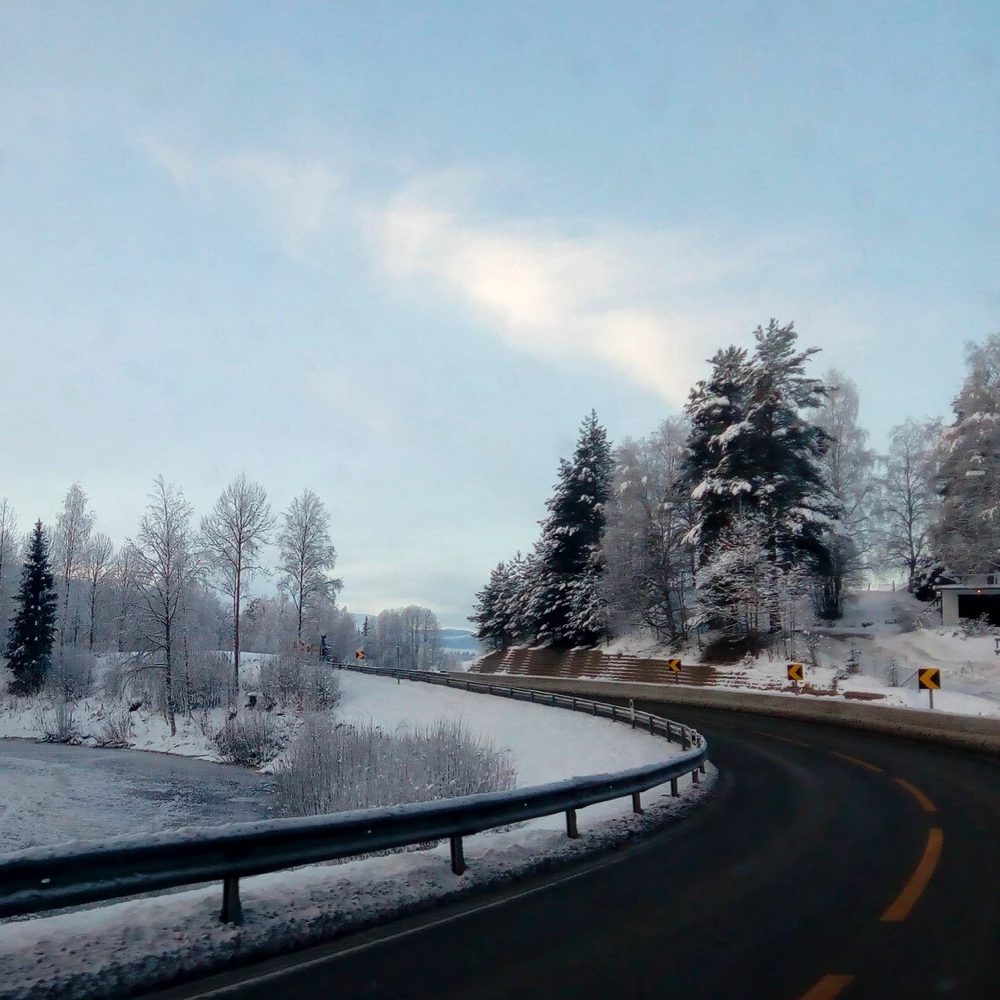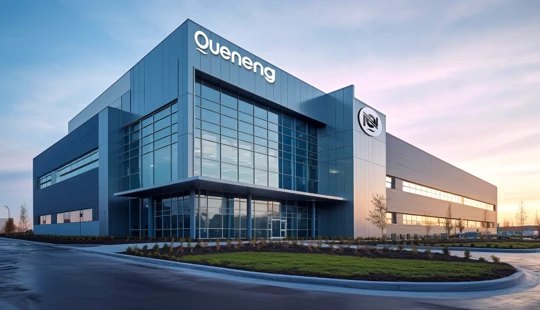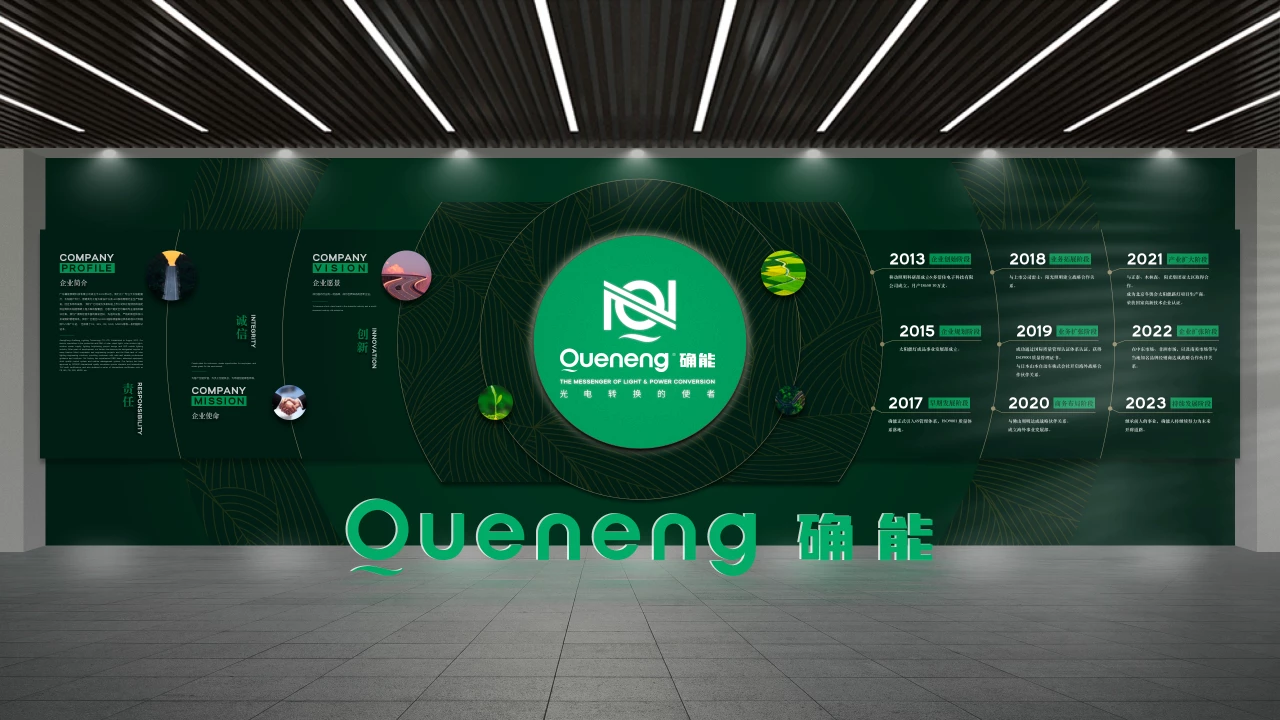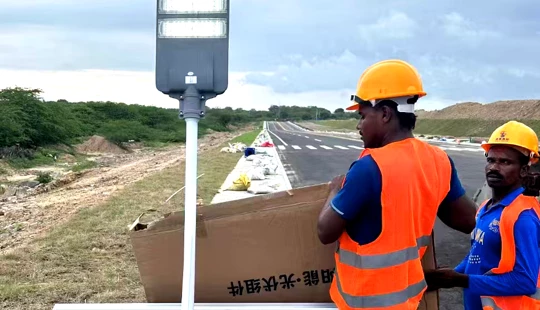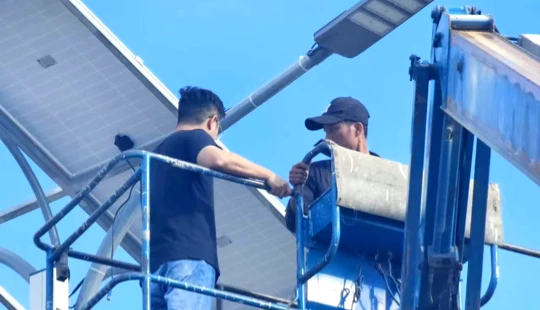How Is the System Affected by Partial Shading on the Solar Panel During the Day?
Learn how partial shading affects solar panel performance, energy output, and system reliability. Discover practical solutions to minimize shading impact in solar lighting and power systems.
Partial shading is a common but critical issue that can significantly affect the performance of solar panels and related systems. Whether it's caused by trees, buildings, clouds, or dust, shading disrupts the consistent energy production necessary for powering solar street lights, garden systems, or photovoltaic panels.
At GuangDong Queneng Lighting Technology Co., Ltd., we specialize in developing high-efficiency solar lighting products that minimize the risks associated with partial shading. Understanding the problem and applying the right design strategies are essential to ensure your solar systems stay reliable and efficient.
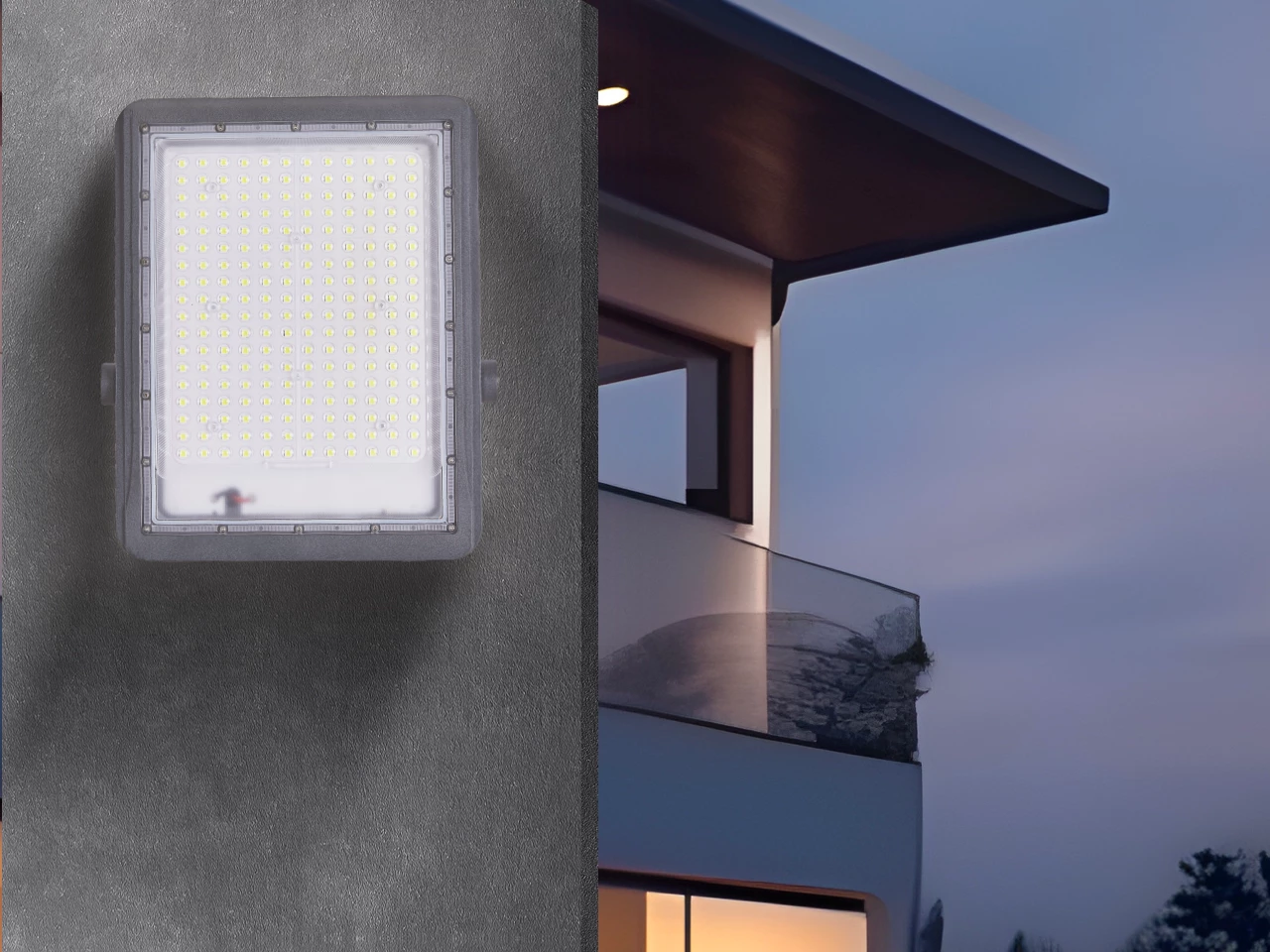
What Happens When a Solar Panel is Partially Shaded?
Photovoltaic (PV) solar panels are made up of multiple solar cells connected in series and/or parallel. When part of a panel is shaded, even a small portion, the affected cells produce less electricity—or none at all. Since current in a series circuit is limited by the weakest cell, partial shading can drag down the entire panel’s output.
Key Effects of Partial Shading on Solar Systems
- Reduced Power Output: Shading directly reduces sunlight exposure, which leads to lower current generation. In severe cases, it can cut the power output by more than 50%.
- Mismatch Losses: Voltage mismatches occur between shaded and unshaded cells, decreasing overall system efficiency.
- Increased Heat (Hot Spots): Shaded cells may dissipate energy as heat, which can damage panels over time.
- Battery Charging Delays: Less energy during the day means reduced charging efficiency for lighting systems at night.
Queneng's Solutions to Partial Shading Challenges
At Queneng, we implement multiple advanced features to mitigate shading issues:
- Bypass Diodes: Built-in diodes bypass shaded cells to prevent energy losses across the panel.
- MPPT Controllers: Maximum Power Point Tracking adjusts voltage and current for optimized energy harvesting, even under uneven lighting.
- Optimized Panel Layouts: We advise clients on proper placement and tilt angles to avoid shade-prone areas.
- Modular Lighting Design: Our systems continue operating efficiently in dynamic weather or lighting conditions.
Frequently Asked Questions (FAQ)
- Q1: Can a single shaded cell affect the whole solar panel?
- A1: Yes. In a series configuration, one shaded cell can limit the current across the entire panel, lowering total output.
- Q2: How much energy can be lost due to partial shading?
- A2: Even 10–20% shading can reduce system output by 30–50% depending on layout and diode configuration.
- Q3: What’s the best way to prevent shading issues?
- A3: Avoid installation near shade-casting objects, use MPPT controllers, include bypass diodes, and keep panels clean.
- Q4: Will shading reduce the lifespan of a solar panel?
- A4: Yes, long-term shading can cause hot spots, which may degrade or damage the panel over time.
- Q5: Do Queneng products include anti-shading features?
- A5: Absolutely. Our lighting systems are engineered with bypass diode integration and MPPT controllers to minimize shading effects and ensure long-term performance.
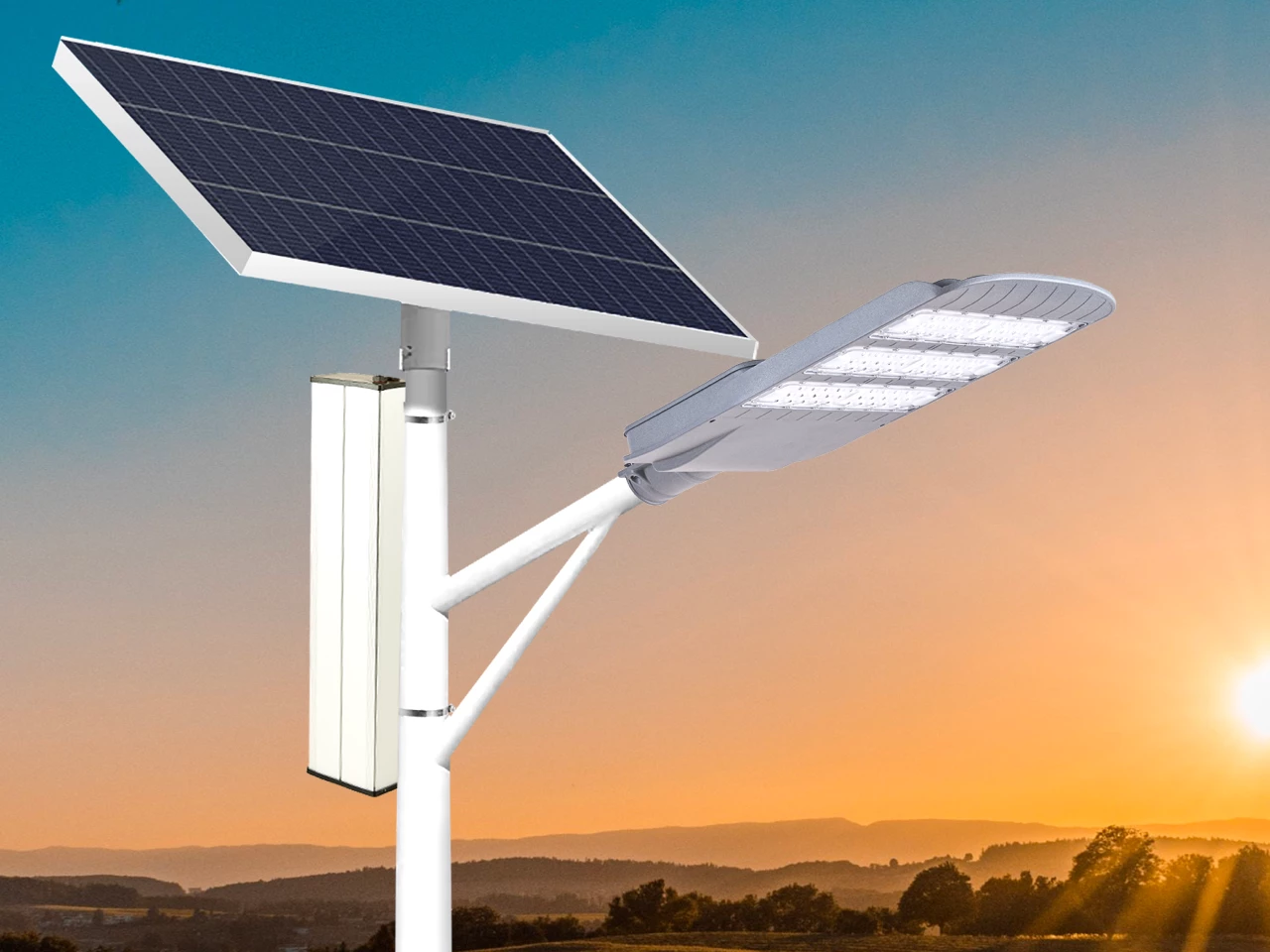
Conclusion
Partial shading is a real-world challenge for solar applications, but its impact can be minimized with the right technology and design approach. GuangDong Queneng Lighting Technology Co., Ltd. delivers intelligent solar lighting solutions that adapt to various environmental conditions, offering stable performance and long-term reliability.
If you're planning a project in an area where shading may occur, contact our engineering team for customized system recommendations and efficient solar lighting design.

Have more questions about our products or services?
The latest hot news you might like

Discover how solar panels power street lights, exploring the technology behind solar energy conversion, storage systems, and how solar-powered street lights are revolutionizing urban and rural lighting solutions.

Learn how AC Solar Hybrid Street Lights work, their advantages, disadvantages, system behavior in low-sunlight conditions, and why hybrid technology is ideal for regions with unstable sunlight.

Municipalities around the world are increasingly adopting solar-powered streetlights as part of their urban development strategies. Rising energy costs, the need for sustainable infrastructure, and government green initiatives are driving cities to switch from traditional street lighting to advanced LED solar streetlights.
Queneng Lighting provides municipalities with cost-effective, energy-efficient, and durable solar lighting solutions, ensuring safe and sustainable public spaces.
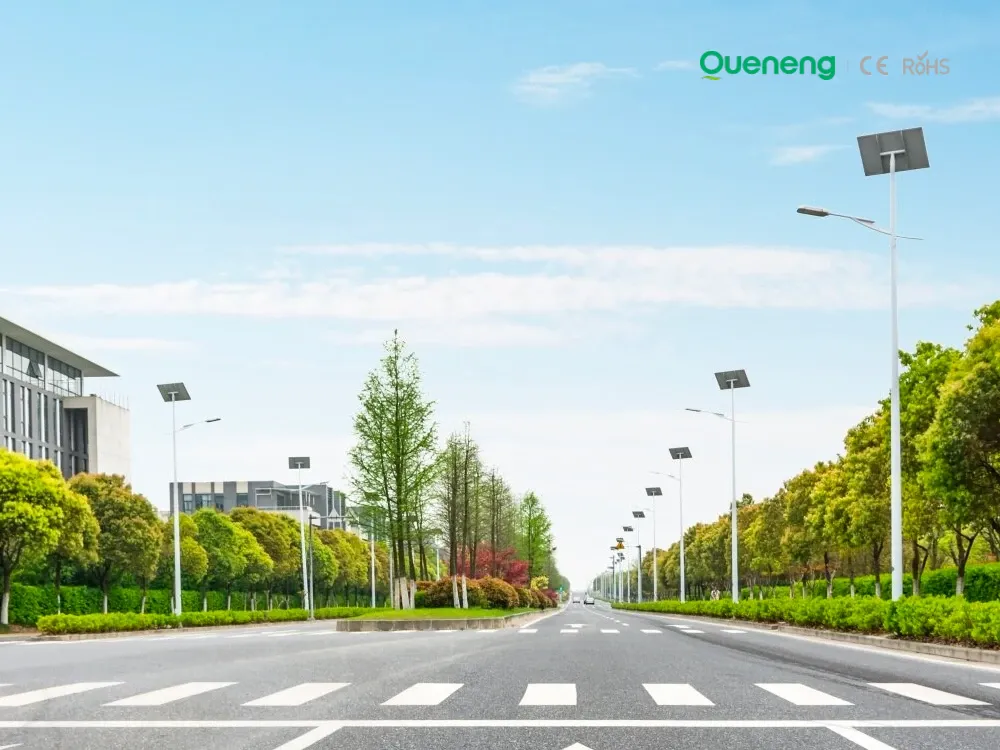
In recent years, the purchase of solar streetlights for municipalities has become a growing trend across the globe. Local governments are under pressure to reduce public expenditure, promote green energy, and create safer communities. Solar streetlights provide a reliable, cost-effective, and sustainable solution that meets these needs. Queneng Lighting, as a leading solar street lighting manufacturer, has supported multiple municipal projects worldwide with customized and energy-efficient solutions.
FAQ
Remote Areas Rural Development
How long does it take to install solar streetlights in a rural area?
Installation time varies, but on average, it takes about 2-3 hours per light, with complete project timelines depending on the scale and terrain.
Battery Performance and Testing
What is the standard charge retention test?
After the battery is discharged to 1.0V at 0.2C, it is charged at 0.1C for 16 hours, stored at a temperature of 20℃±5℃ and a humidity of 65%±20% for 28 days, and then discharged to 1.0V at 0.2C. NiMH batteries should last longer than 3 hours.
The national standard stipulates that the standard charge retention test of lithium batteries is: (IEC has no relevant standards) The battery is discharged to 3.0/unit at 0.2C, and then charged to 4.2V at 1C constant current and constant voltage, with a cut-off current of 10mA, at a temperature of 20 ℃±5℃, after 28 days of storage, discharge at 0.2C to 2.75V, calculate the discharge capacity, and compare it with the battery's nominal capacity, it should not be less than 85% of the initial capacity.
Schools and Educational Institutions
How are the solar lights maintained?
Solar lights require minimal maintenance, typically only occasional cleaning of the solar panels and checking the battery and light functions.
Solar Street Light Luhui
How much energy can Luhui solar street lights save compared to traditional street lighting?
Luhui solar street lights can save up to 80% in energy costs compared to conventional street lighting, as they use solar power and have energy-efficient LEDs that consume significantly less power than traditional lighting systems.
Solar Street Light Luqiu
What makes Luqiu solar street lights innovative compared to traditional solar street lights?
Luqiu solar street lights incorporate advanced technology, such as energy-saving LEDs, smart sensors, and efficient solar panels. These features ensure higher performance, longer battery life, and better adaptability to varying weather conditions, setting them apart from traditional models.
Solar Street Light Lufei
How long does it take to install a solar street light?
Installation typically takes 1-2 hours, depending on the complexity of the setup. No external wiring is required, which makes installation faster and simpler compared to traditional street lighting.

Discover the Lulin High-Performance Solar Street Light by Queneng, a durable and energy-saving outdoor lighting solution. Designed for efficiency and reliability, it harnesses solar power to sustainably illuminate streets and pathways. Optimize your outdoor spaces today with Queneng's innovative solar street lighting technology.
If you would like more information about Queneng solar lighting solutions, please send us a message by filling out the form below. Our professional team will get back to you within 24 hours!
Rest assured that your privacy is important to us, and all information provided will be handled with the utmost confidentiality.
Schedule a Meeting

Book a date and time that is convenient for you and conduct the session in advance.
Have more questions about our products or services?

